Best MTB flat pedals – 9 top options for trail and gravity riding
Our expert testers' pick of the grippiest and toughest mountain bike flat pedals you can buy
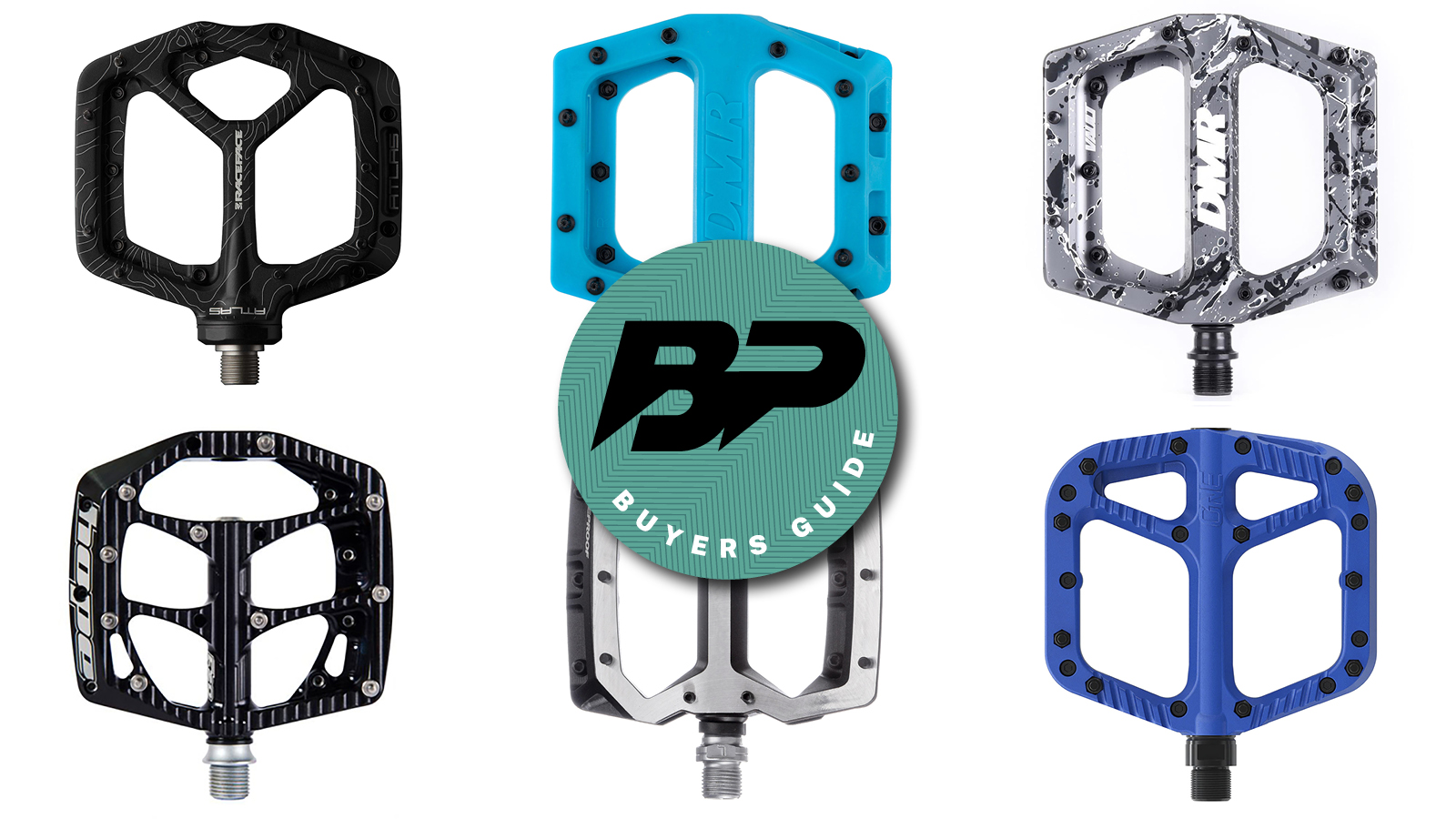
The best MTB flat pedals are popular with those who prefer undiluted trail feedback, combined with the ability to shift your feet while you ride. Riders who like to put serious miles under their belts mostly prefer to clip-in to their pedals for better efficiency and power transfer – for more on them, see our guide to the best clipless mountain bike pedals.
If you're looking to improve your technical riding technique, without the risk of having to follow your bike into a crash if things do go wrong, the best MTB flat pedals are the solution too. Advances in design have delivered larger platform flat pedals with thinner pedal bodies that mean lower weights.
Our team of expert testers have ridden every leading flat pedal and we've featured our choice of the best options right here. The level of grip is undoubtedly the most vital aspect of a flat pedal, but we also consider the quality of the pedal bearings, how effective the seals are at keeping the elements at bay, and how the pedal body fares against rock strikes and the like.
It is worth mentioning that even the best flat pedals work as part of a system and must be paired with MTB flat pedal shoes for the best results.
For more on how to choose the best MTB flat pedals for you, head to the bottom of this page for lots of helpful buying advice. And if you're considering other pedal options as well as flats, our best mountain bike pedals guide will be of use to you too. If you're on a tighter budget, see our guide to the best cheap MTB pedals.
The Quick List

The redesigned Atlas is as good as it gets
Superb grip, lighter than most, resistant to damage and simple to service – we reckon it's the best flat pedal you can buy.
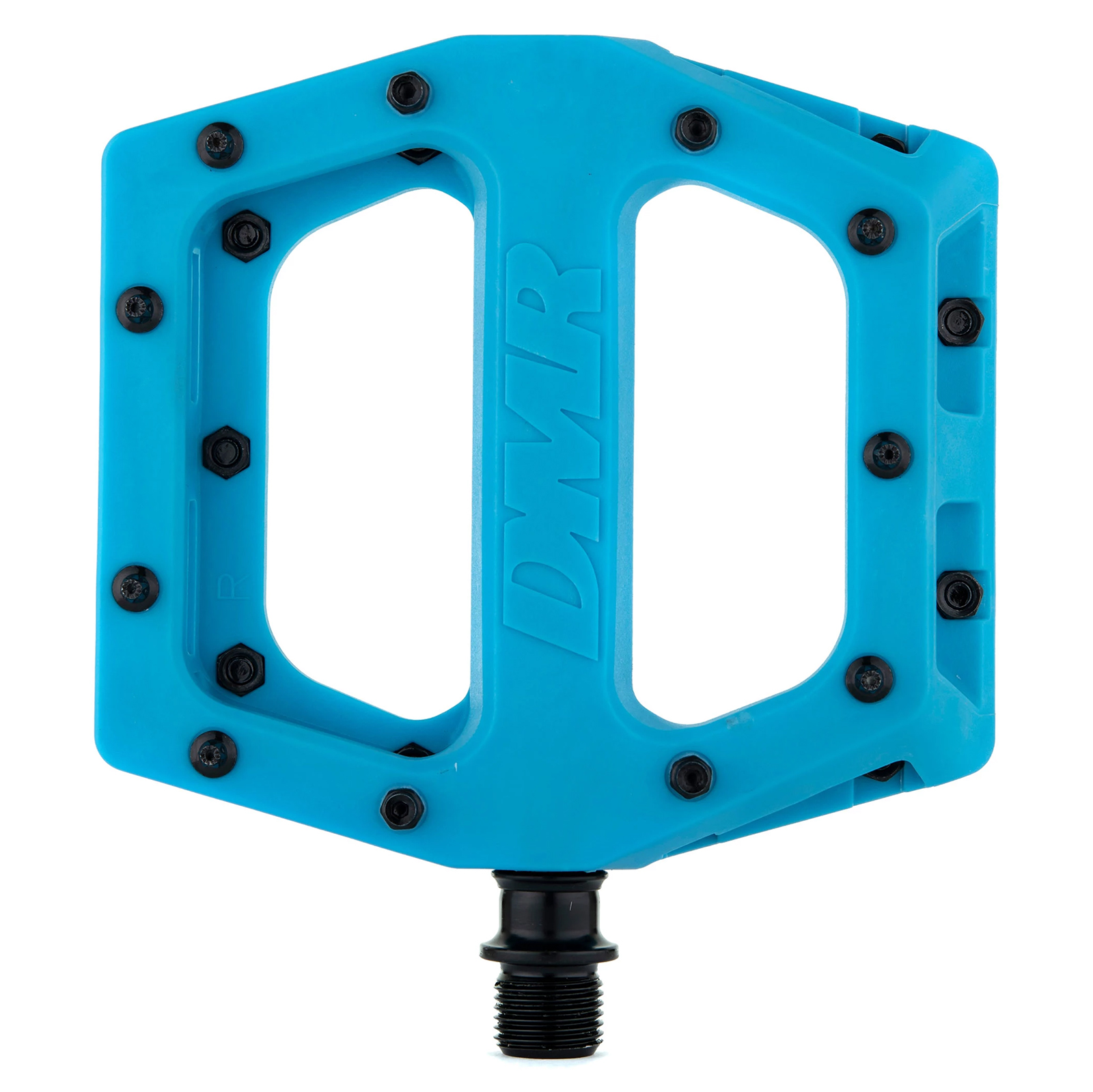
Tough, scar-shrugging composite pedal
The same shape as DMR’s Vault but this nylon composite version is much cheaper and has an impressive performance.
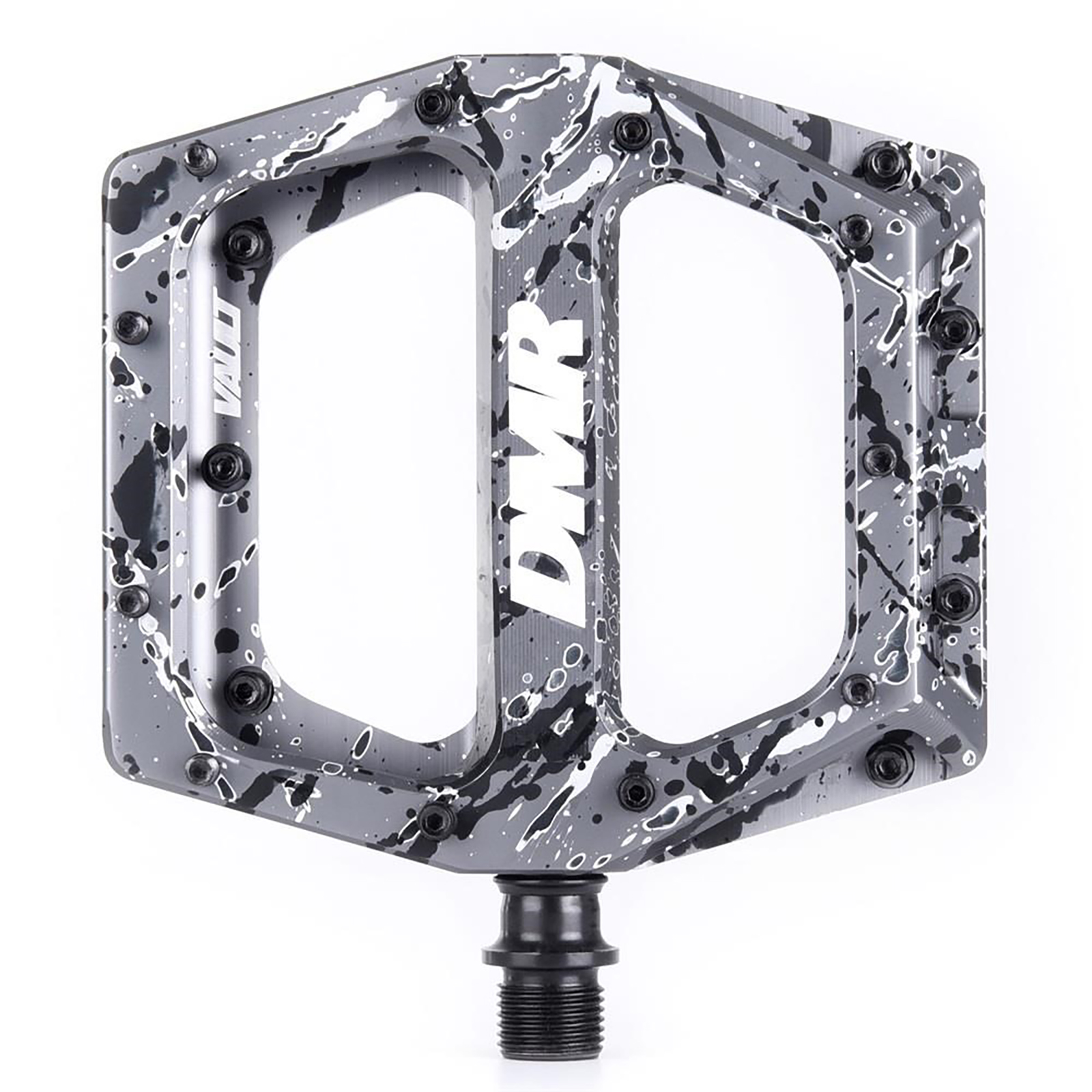
Super-sturdy, benchmark flat pedal
If you're looking for super-dependable grip on a pedal that can laugh off big hits, the DMR Vault is hard to beat.
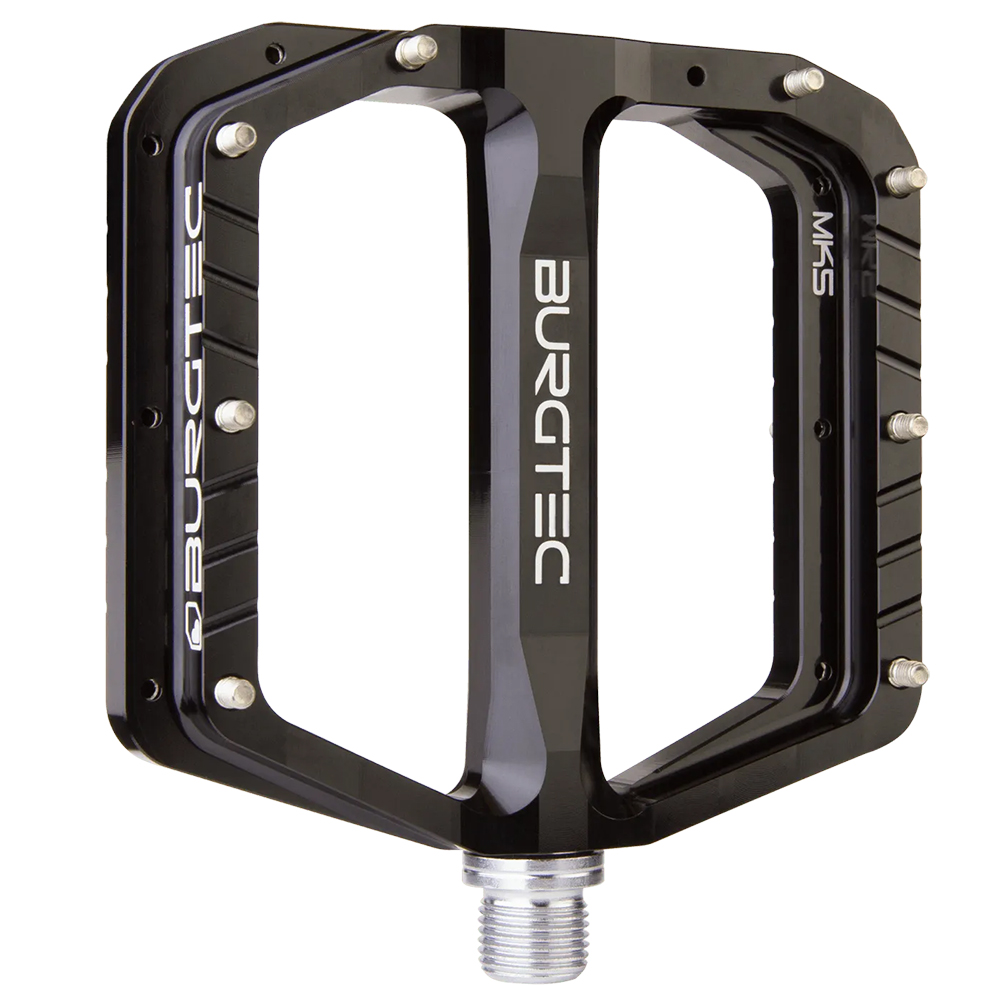
Big, grippy pedal with excellent durability
Burgtec’s latest aluminum flat pedal offers excellent internal sealing and bombproof construction.
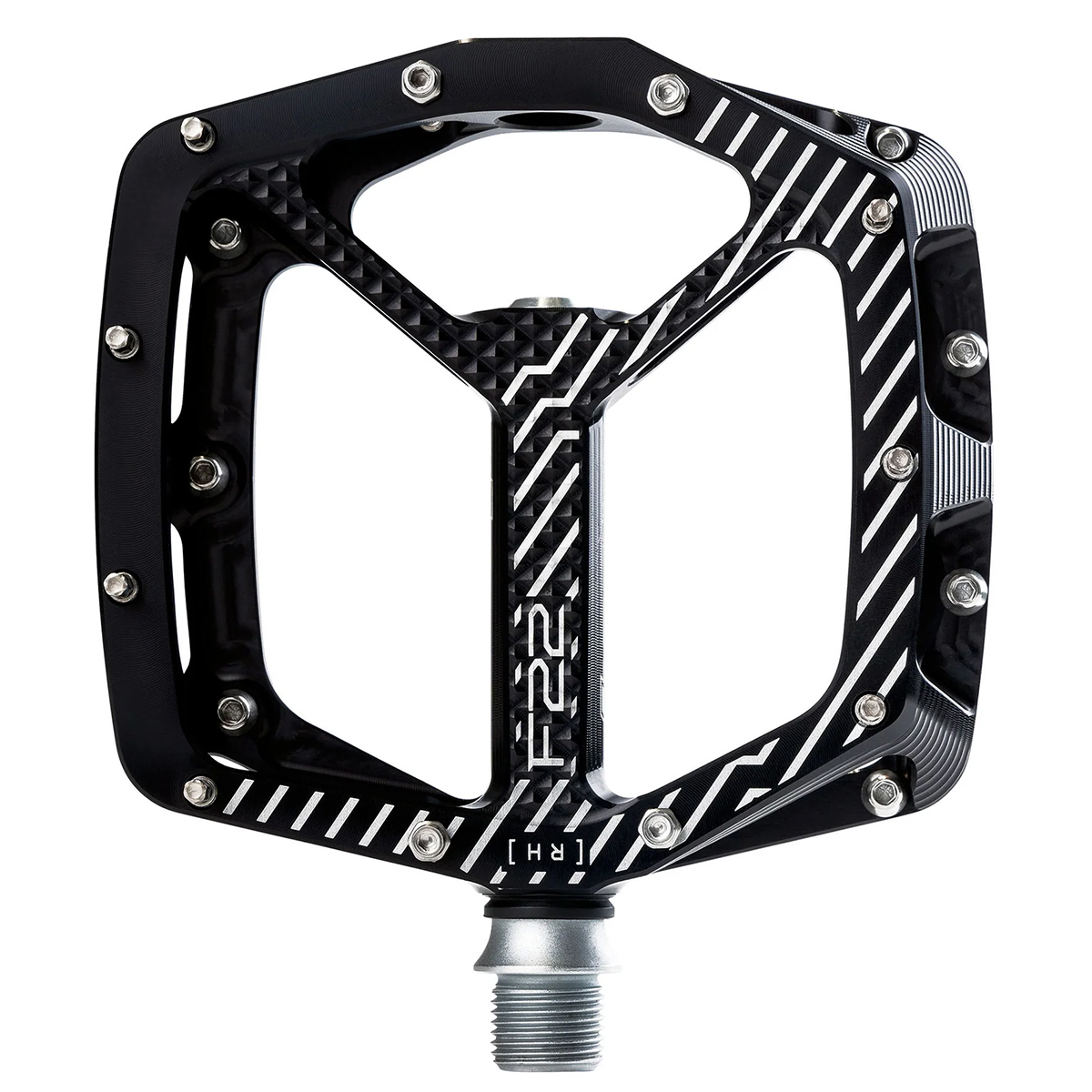
Triple sealed internals and easy servicing
Hope's F22 pedal is a big step up on the brand's F20. It's light and triple sealed to keep the elements out for longer.
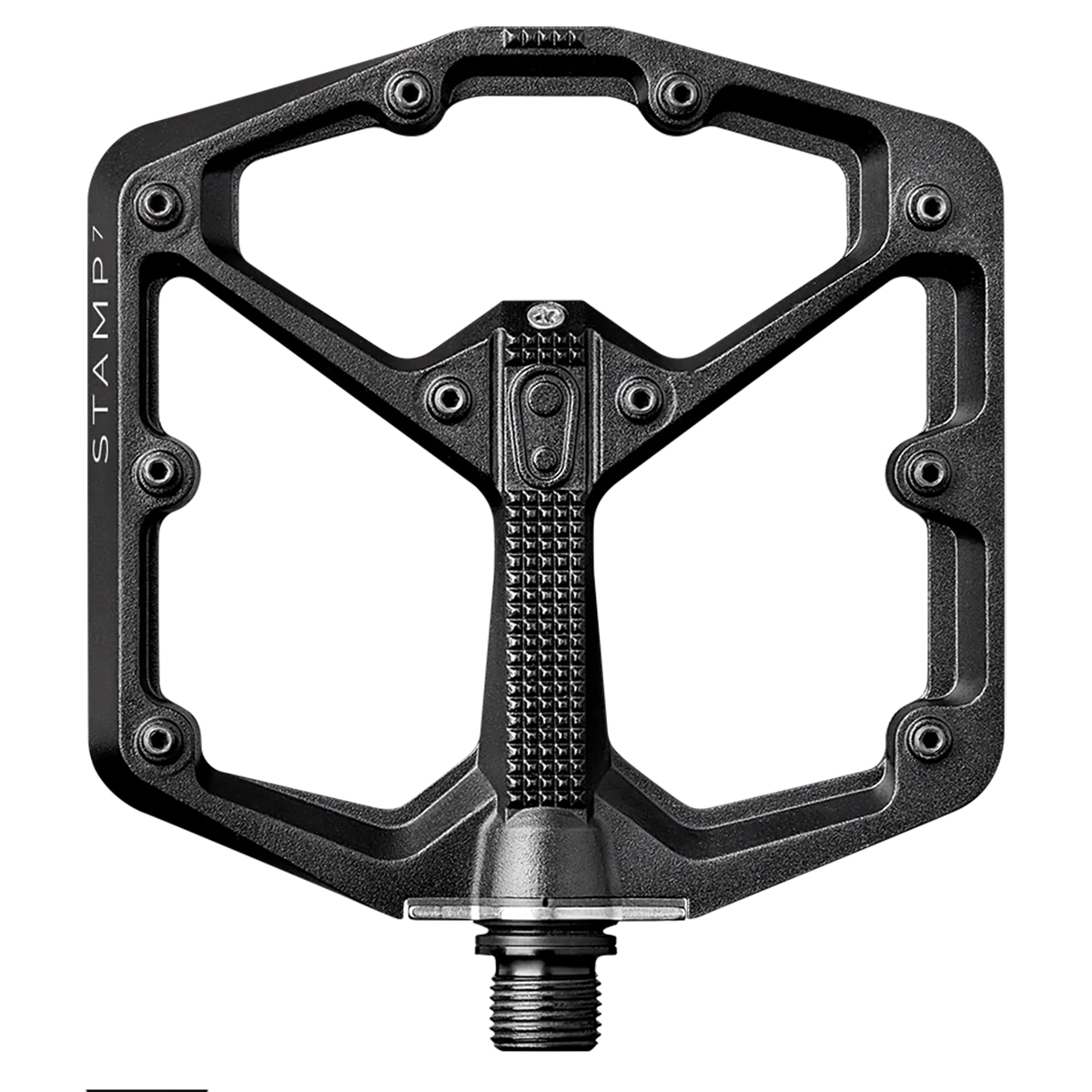
Ultra-thin shoe size-specific pedal
Super thin and lightweight, the Stamp 7 offers two platform sizes to better fit the dimensions of your shoes.
See the next 3 flat pedals ↓
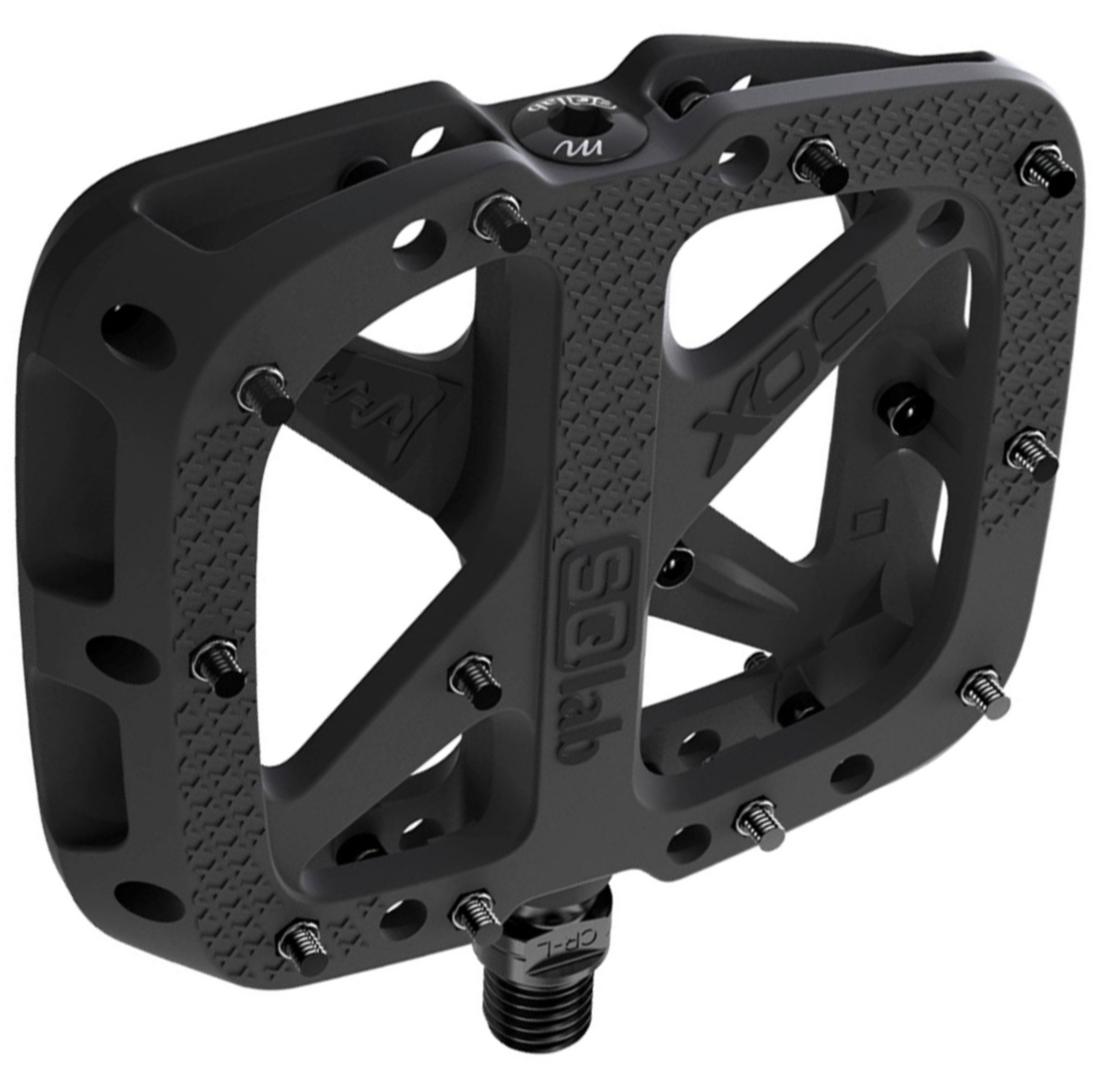
The 50X comes in three different axle lengths
If standard models don't quite suit the width of your feet or your riding gait, the SQlab 50X may well be the pedals for you.
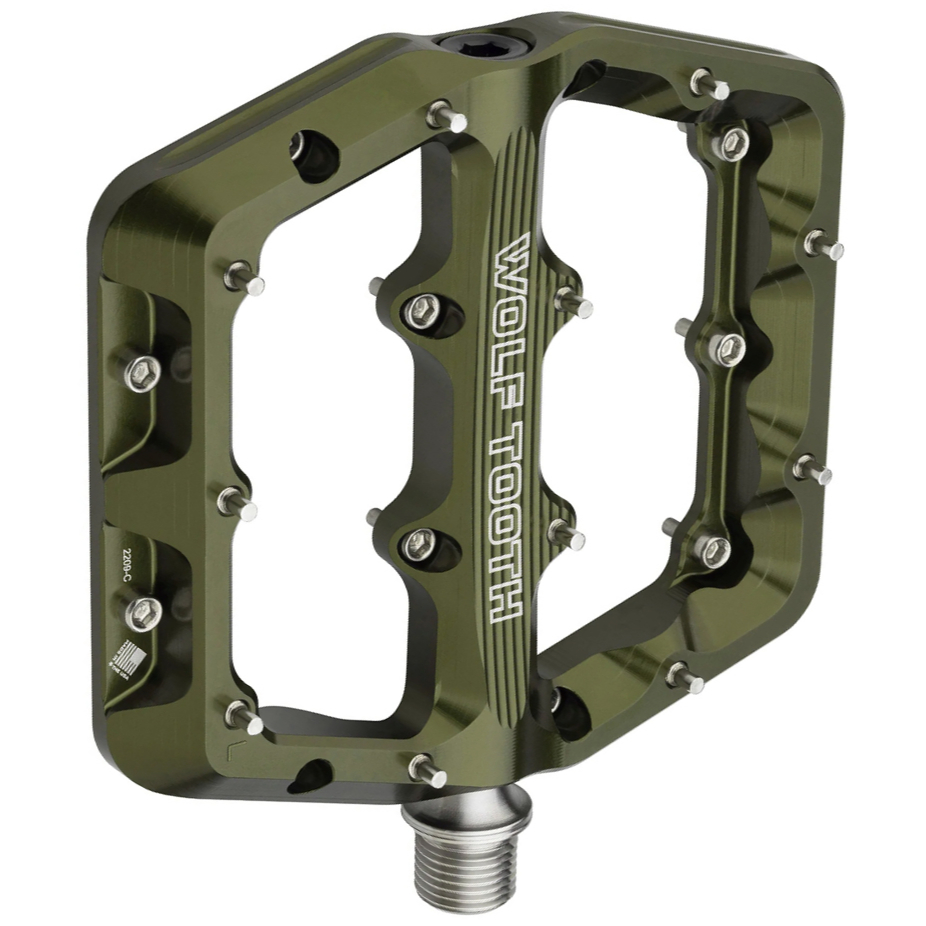
Dual-concave, totally rebuildable pedals
The Waveforms have the deepest concave of any MTB pedal we've tested and they could last a lifetime as every part is replaceable.
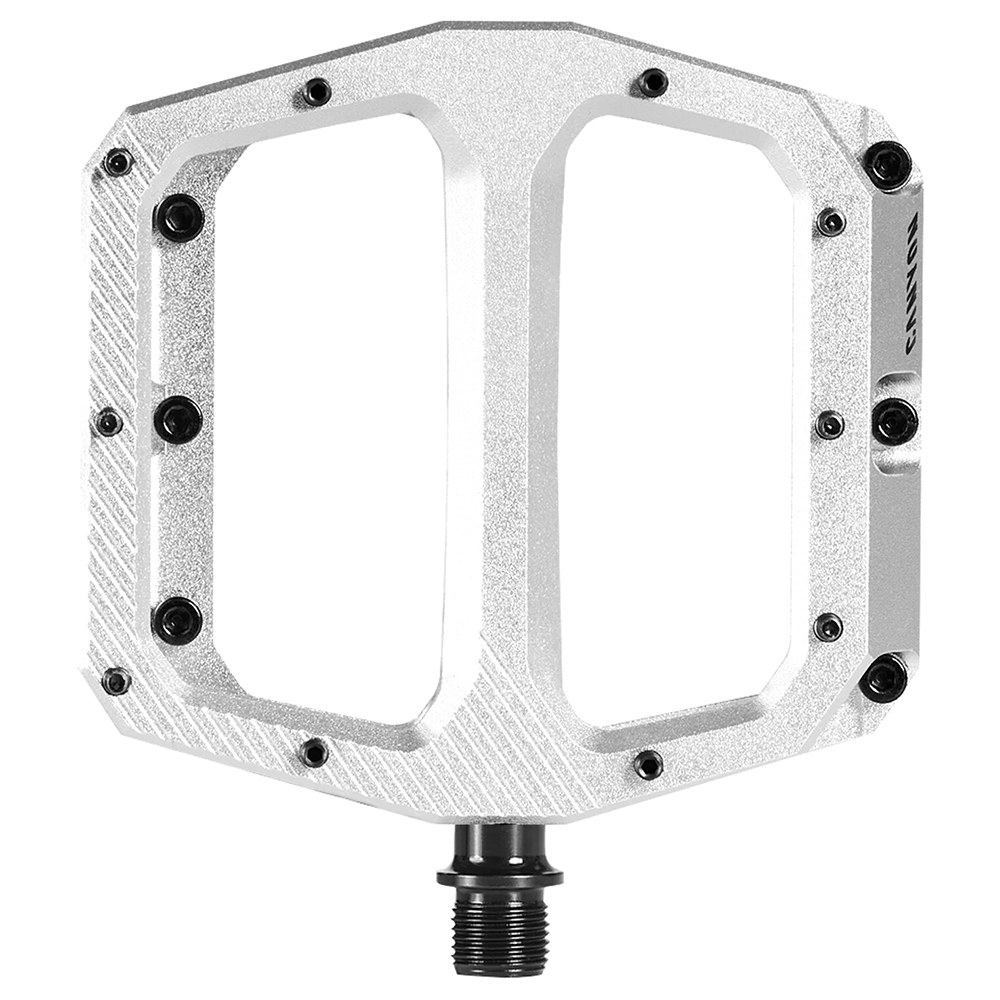
Available in large and small platform sizes
Canyon's Performance Flat comes in two sizes and has a slight amount of concavity for enhanced grip.
The best MTB flat pedals
Why trust BikePerfect
1. Best MTB flat pedals overall
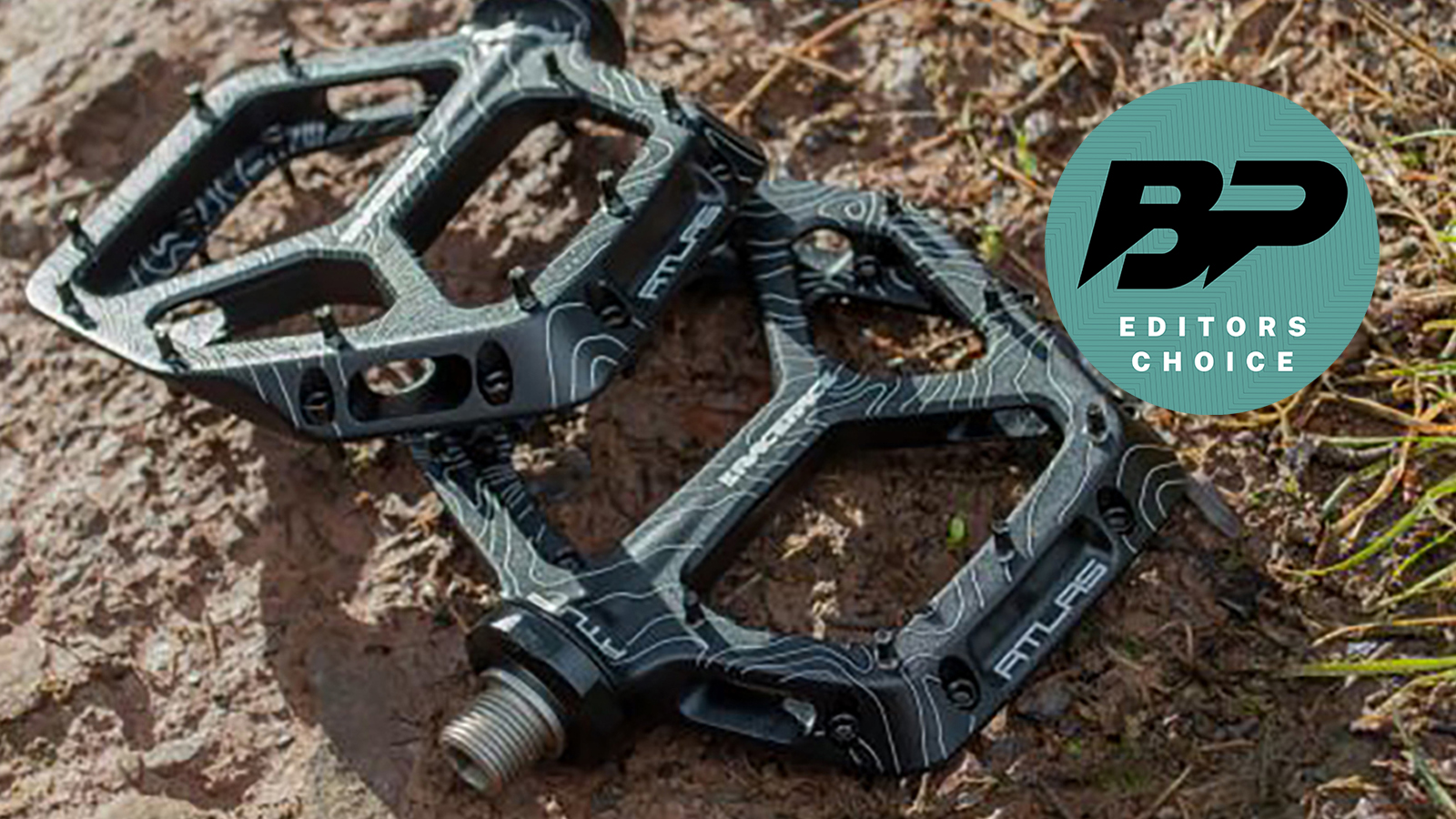
Specifications
Reasons to buy
Reasons to avoid
Race Face's latest version of the Atlas pedal improves on the original in every department. The Mk2 incarnation has a wider platform and a thinner body, an easier to service bearing and comes with a lifetime warranty.
While the original Atlas platform was deemed a touch small by some riders, the updated version is virtually the same size as DMR's massively popular and also excellent Vault pedal. The only difference in platform is that the front and rear of the Atlas' cage are slightly shorter to accommodate its far more rounded corners. The 10 pins on each pedal face are narrower (2mm) and longer (6mm) than you'll find on most rival pedals (the length can be shortened by adding the included washers), while the chamfered pedal bodies have the faintest whiff of concave.
We've been riding with these pedals for over six months now and are seriously impressed with the support they give and the amount of grip they offer. On the flip side, the narrow pins are razor-sharp and our scarred calves are proof of their vicious nature. While our beautiful legs may have been disfigured, the iodized graphics (available in nine different colors) on the pedals still look great and there's no sign that the finish will wear away any time soon either.
Our reviewer Rich Owen concluded: "The new Race Face Atlas pedals are seriously hard to fault."
For more, see our full Race Face Atlas pedal review.
2. Best value MTB flat pedals
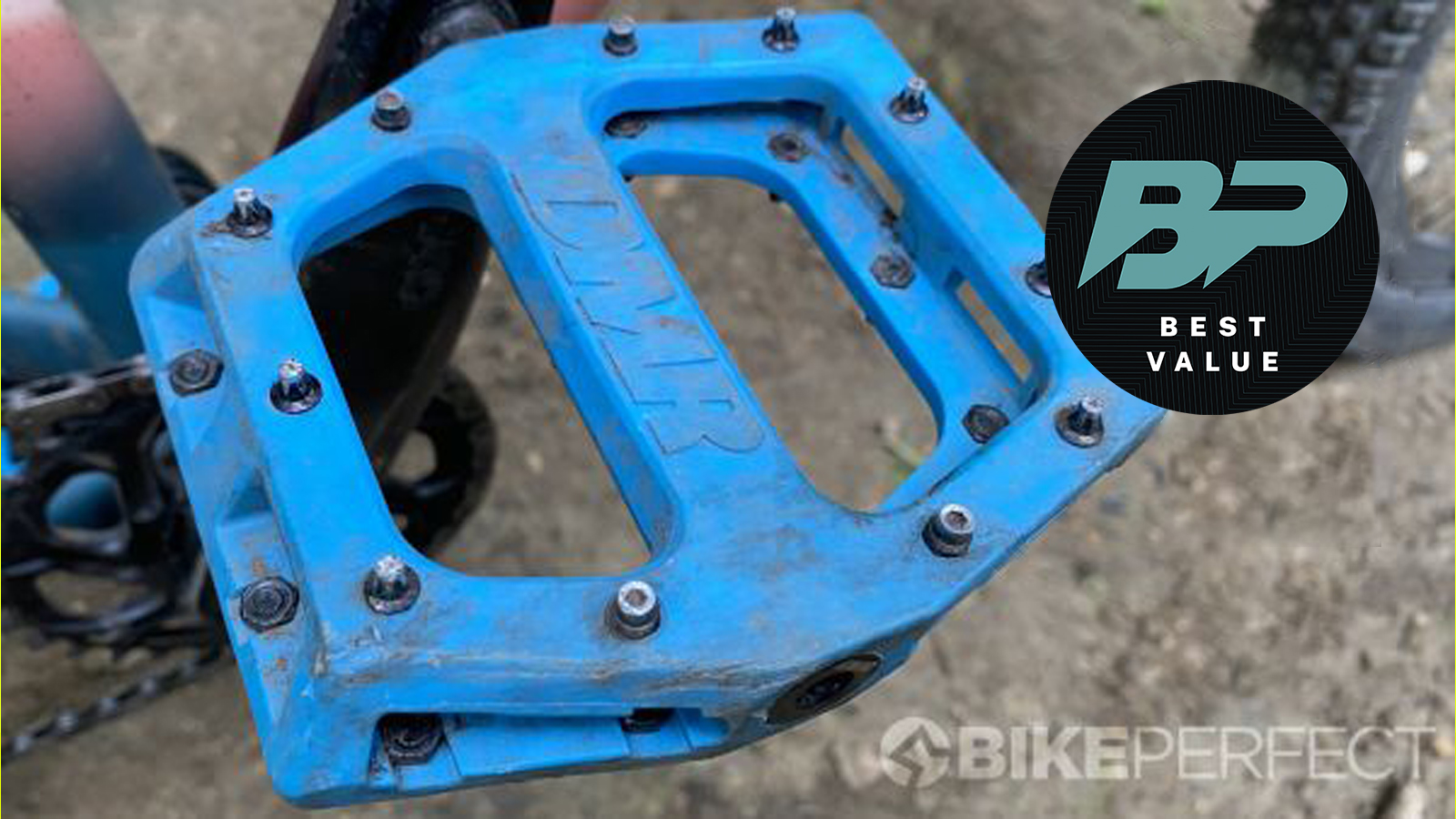
Specifications
Reasons to buy
Reasons to avoid
The 105mm x 105mm platform of the V11 is the same as DMR's popular alloy Vault (see below) as well as the signature DMR concave profile to enhance platform grip. The only difference is pedal thickness, with the nylon construction adding an extra 3mm of thickness to enhance the strength. The foot-centering shape is adorned with 11 replaceable/adjustable steel pins on each side, with a collection of longer ‘Moto’ pins front and rear for maximum grip.
The best thing we can say about the V11s is that most riders will be hard-pressed to tell them apart from the metal rivals. In our tests, we found the plastic platform is a little slippier in the wet, however, the flexible construction can improve connection and reduce foot tiredness on relentlessly battering runs. We found they’re more controlled in terms of ricochet if you ground them when pedaling. The pedals are also serviceable with DMR offering bearing kits and replaceable pin sets.
Our reviewer Guy Kesteven summed up: "DMR’s V11 pedals not only prove that plastic pedals aren’t just throw-away items, but they can actually have advantages in the roughest riding scenarios."
For a more in-depth guide, read our full review of the DMR V11 pedals.
3. Best MTB flat pedals for secure grip
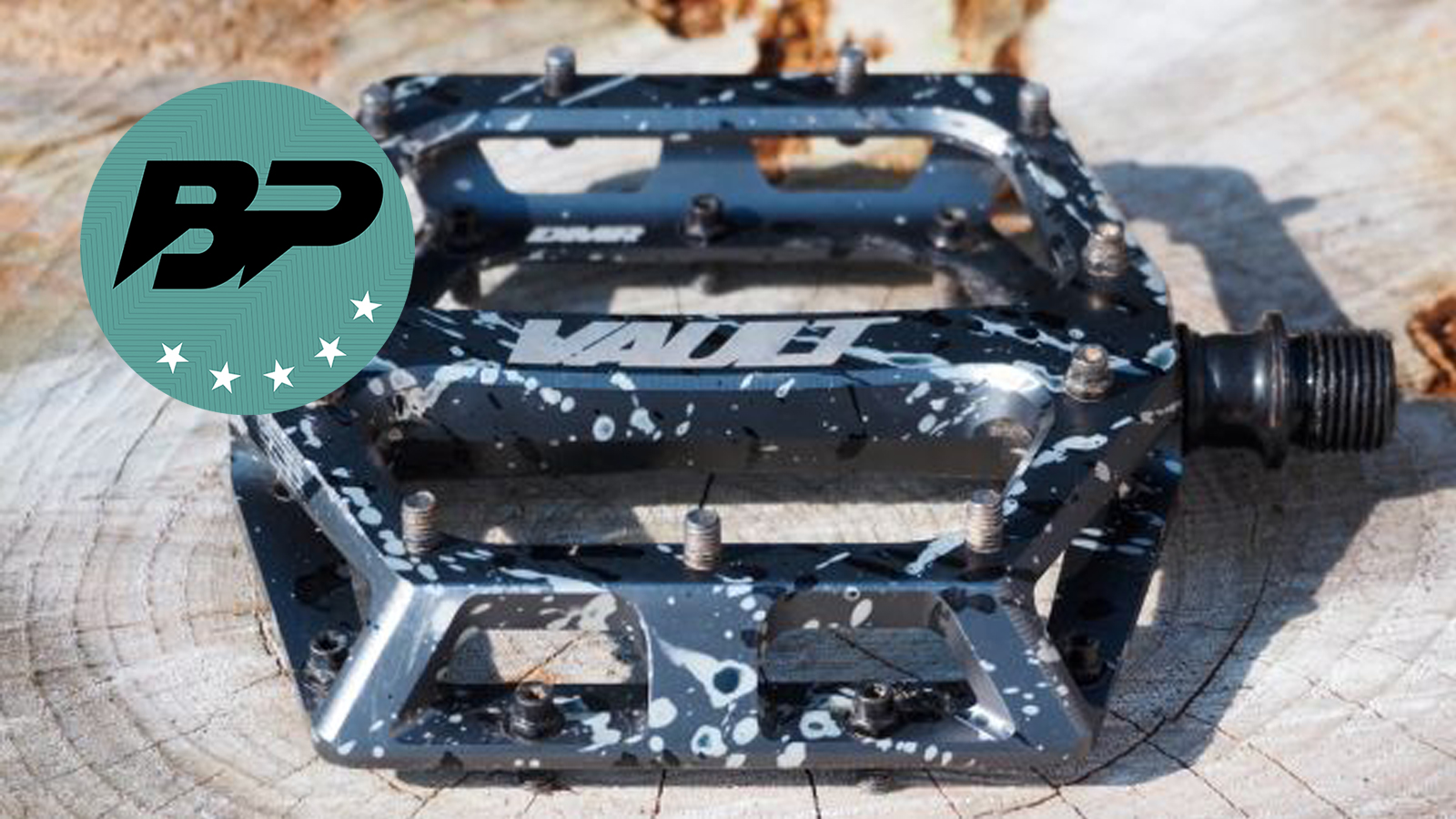
Specifications
Reasons to buy
Reasons to avoid
DMR has been in the flat pedal business for more than two decades and remains the choice for those who want to experience a surge of confidence when attempting a new section of technical singletrack riding.
The Vaults might not win on pin count, but we found the positioning of the pins is excellent and combines with the dual-concave platform to ensure great shoe contact, even when we were on the lean angle limit through a fast berm or bouncing through a challenging rock garden. In our tests they've had more than their fair share of encounters with stony lumps and, aside from the odd scraped corner, with the tough anodized finish on the SE version, they're still looking fresh and yet to drop a pin. Serviceability is straightforward too, thanks to the cartridge bearings and bushings.
Our reviewer Rich Owen said: "If you're looking for super dependable grip on a pedal that can laugh off big hits, then the DMR Vault is very hard to beat."
If you're after pedals to match any aspect of your bike, you can't go wrong with the Vaults as they come in a massive range of colors, as well as special edition models such as the triple anodized Liquid Camo finish pictured here. For more, read our DMR Vault SE review. A lighter version, the Vault Mag SL, is also available.
4. Best bombproof MTB flat pedals
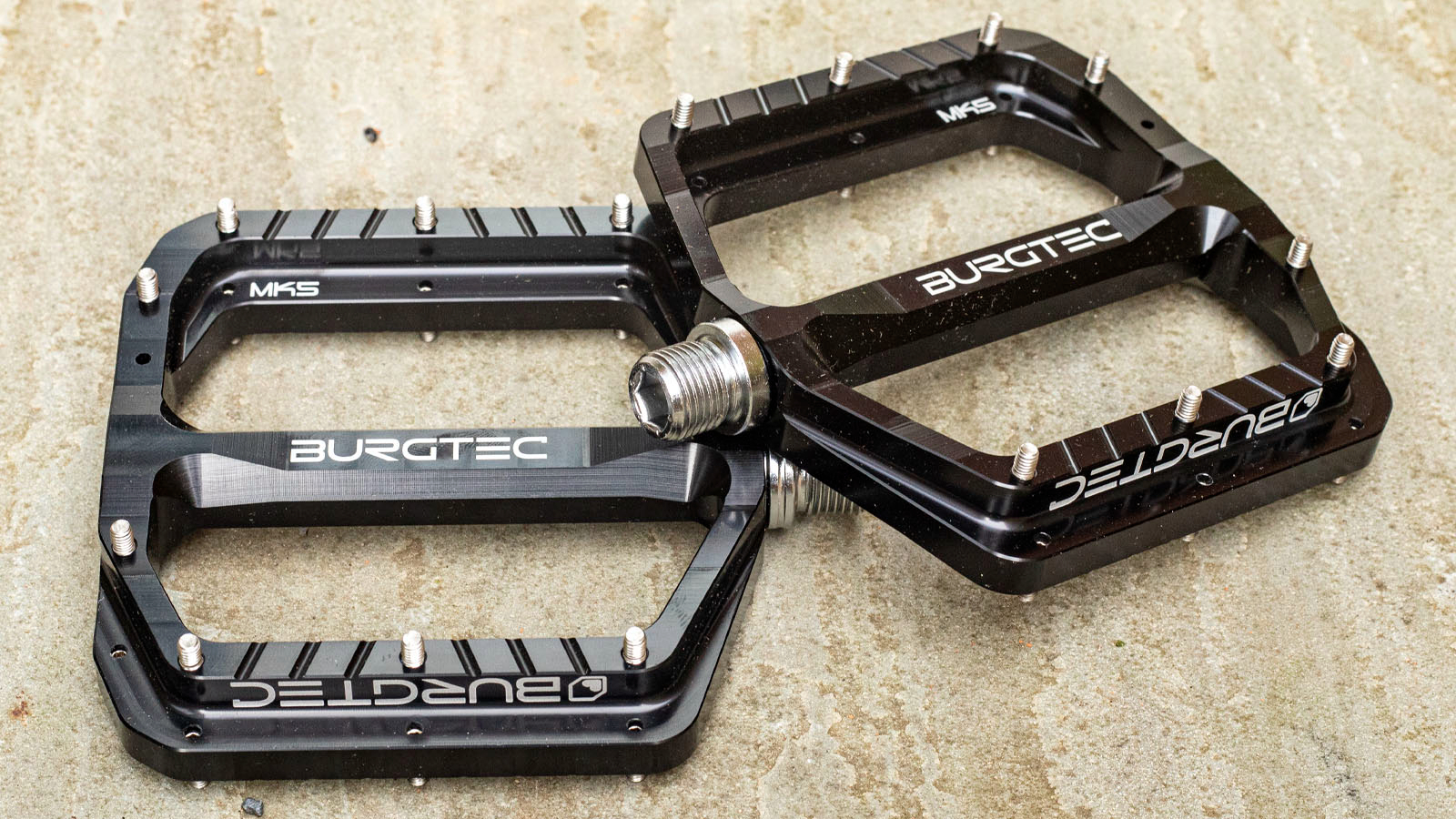
Specifications
Reasons to buy
Reasons to avoid
Over the years, Burgtec has constantly refined the Penthouse Flat to be lighter, lower profile and even grippier, and its now on its fifth generation. We’ve been fans for years, both in terms of bite, but also of how Penthouses survive in all weathers without attention and even through constant jet washing. Our reviewer Mick Kirkman says his three-year-old Penthouse Flats, "have done thousands of kms, and are undoubtedly the longest-lasting flat pedals I’ve ever used".
The completely redesigned 7075 aluminum platform has extra concavity, fresh pin locations and 7 percent more real estate. The Penthouses are now 65g lighter a pair too. Another key benefit is, despite better crank clearance, the MK5 also sticks out less on the outer edge by a few mm for even better ground clearance.
In our tests we found the Penthouses totally rock solid and locked on in all conditions. They are big enough to support shoe soles without any hot spots and a decent amount of concavity cradles the foot and stops it wanting to move fore and aft on hectic sections. The pins are tough and hard to bend or smash out and we found the trailing outer edge pin is particularly well positioned for driving the bike through turns or keeping your foot hooked on in wild sections.
Find out more in our full Burgtec Penthouse Flat MK5 review.
5. Best MTB flat pedals for longevity
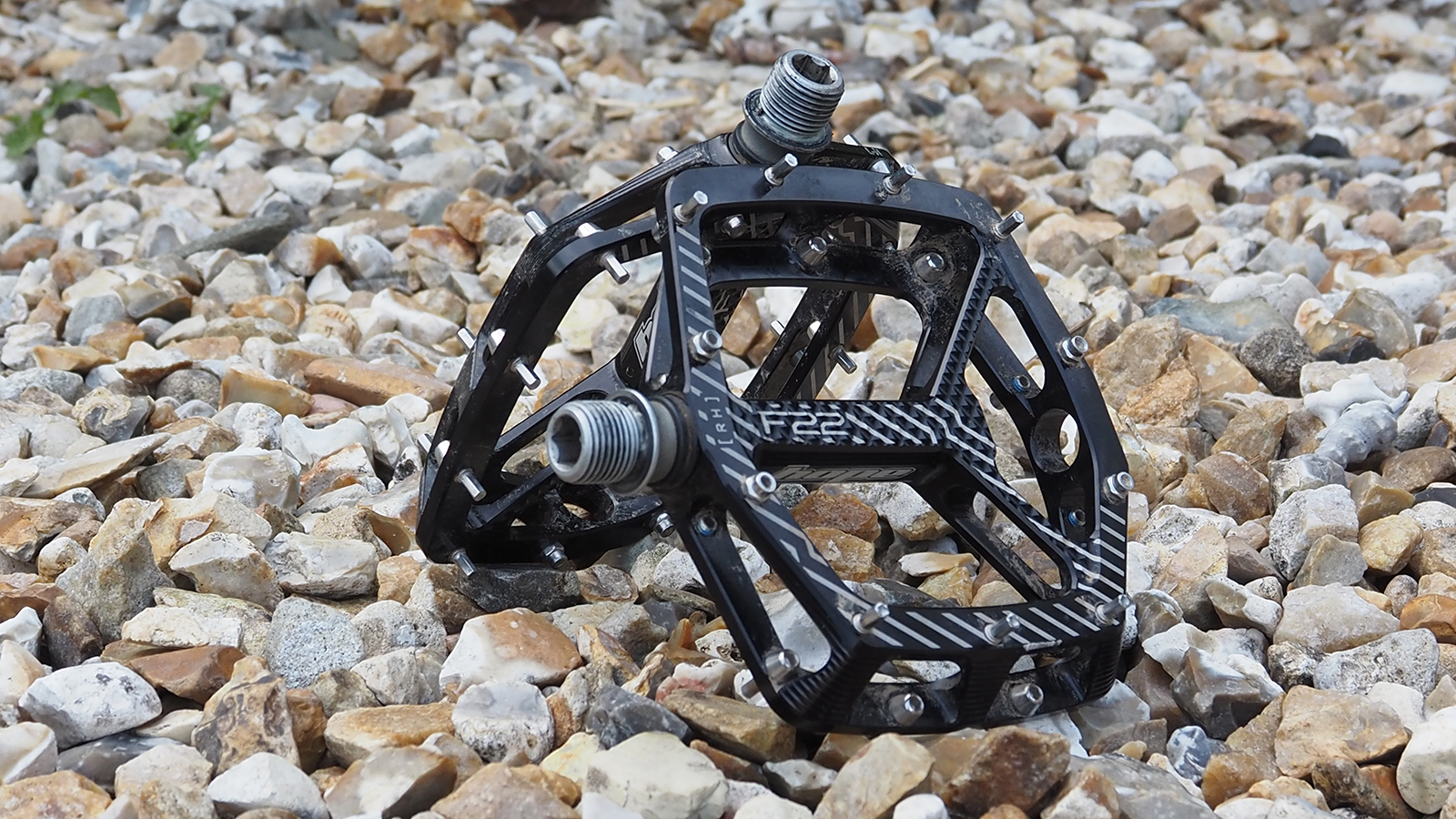
Hope F22
Our expert review:
Specifications
Reasons to buy
Reasons to avoid
Hope CNC machines the F22's pedal body from a single block of aluminum for an excellent strength-to-weight ratio before getting a hard-wearing anodized finish. The chromoly steel axle is heat-treated and plated for durability and spins on a bushing with three cartridge bearings in a sealed chamber. Three seals help keep dirt and water away so the internals will spin freely for longer – we've been running a pair for over a year and they're still going strong. Hope has designed the pedals to be easily serviceable when the time comes for new bearings – though you will need a specific tool (a 60mm long, 8mm socket) sold by Hope
The F22's platform measures 110mm wide, 105mm long, and 18mm deep (without pins), so it's not as big as some rivals here. A wider leading edge is part of a new asymmetric shape which Hope says, "extends further [than the previous F20 pedal] to give better shoe support and a superior planted feel".
Each pedal comes with 11 pins per side – seven slim 6mm pins across the leading and trailing edges and four stubby 4mm pins on the inside and outside of each face – and the grip they offer is superb. Hope says the hex-shaped pins give enhanced bite, while the surface of the axle section of the body is knurled for extra shoe traction. The F22 has a very slight concave on each face which is made to feel much deeper by the pins of differing lengths. In the package, you also get a set of 1mm washers, which allow you to shorten the pin lengths to help give the feel you want.
6. Best size-specific MTB flat pedals
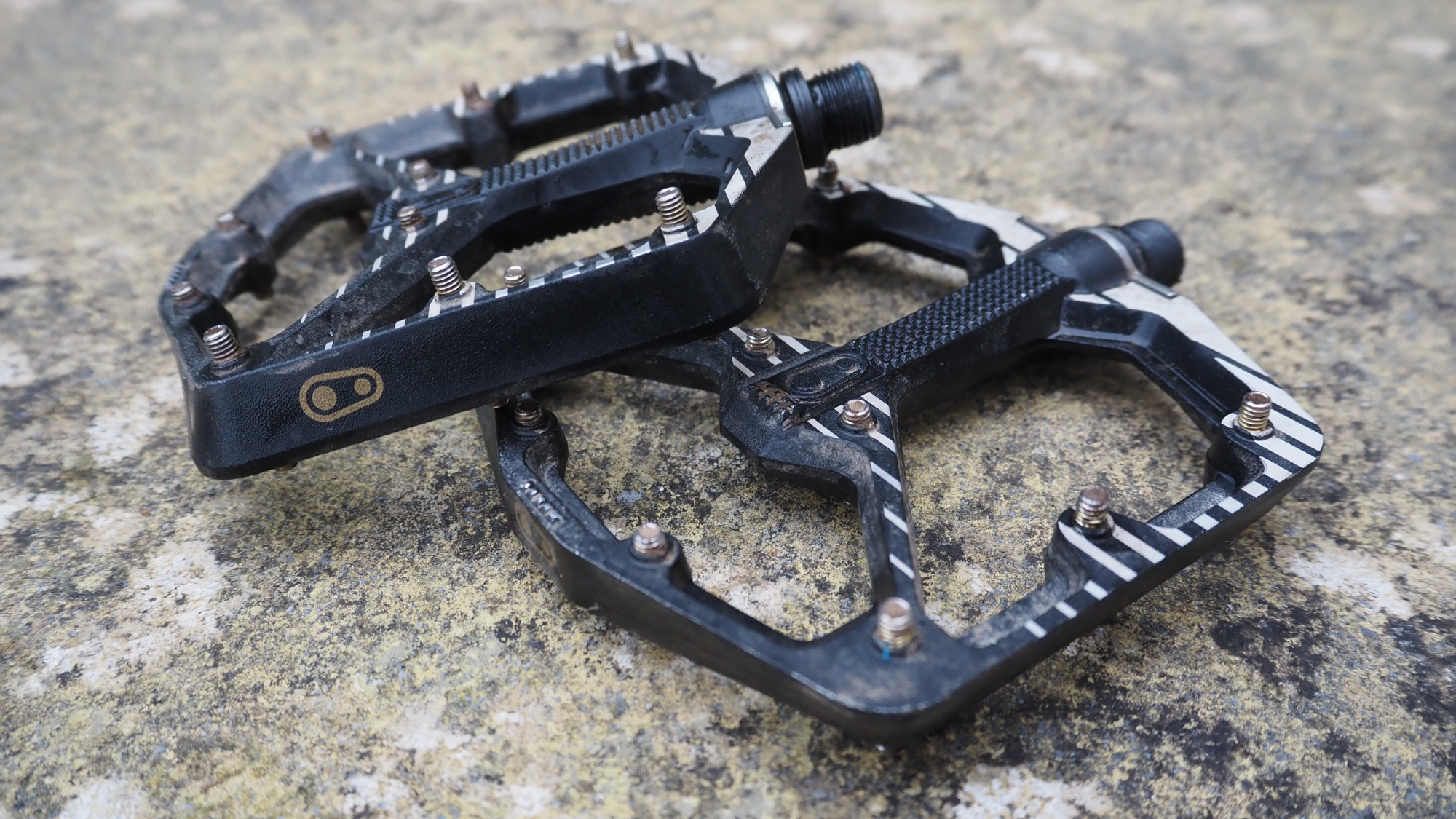
Crankbrothers Stamp 7
Our expert review:
Specifications
Reasons to buy
Reasons to avoid
Crankbrothers have been making high-quality platform pedals for a long time now and its Stamp series caters to a range of riders and price points. The top-level Stamp 7 is an excellent high-grip, high-performance pedal that measures a svelt 11mm depth at its thinnest point.
Crankbrothers offers two platform sizes based on your shoe size. For shoe sizes of 10-15 (US), the large pedal is recommended while riders with 5-10 (US) size feet should go for the smaller size.
Grip from the 10 pins is excellent and there's plenty of pedal surface to support your feet. Shorter pins at the middle of the pedal combine work with a thinner central profile to give a decent amount of useful concave to push your shoes into. Whatever size you go for, the Stamp 7 is a brilliant flat pedal.
7. Best MTB flat pedals for wider feet
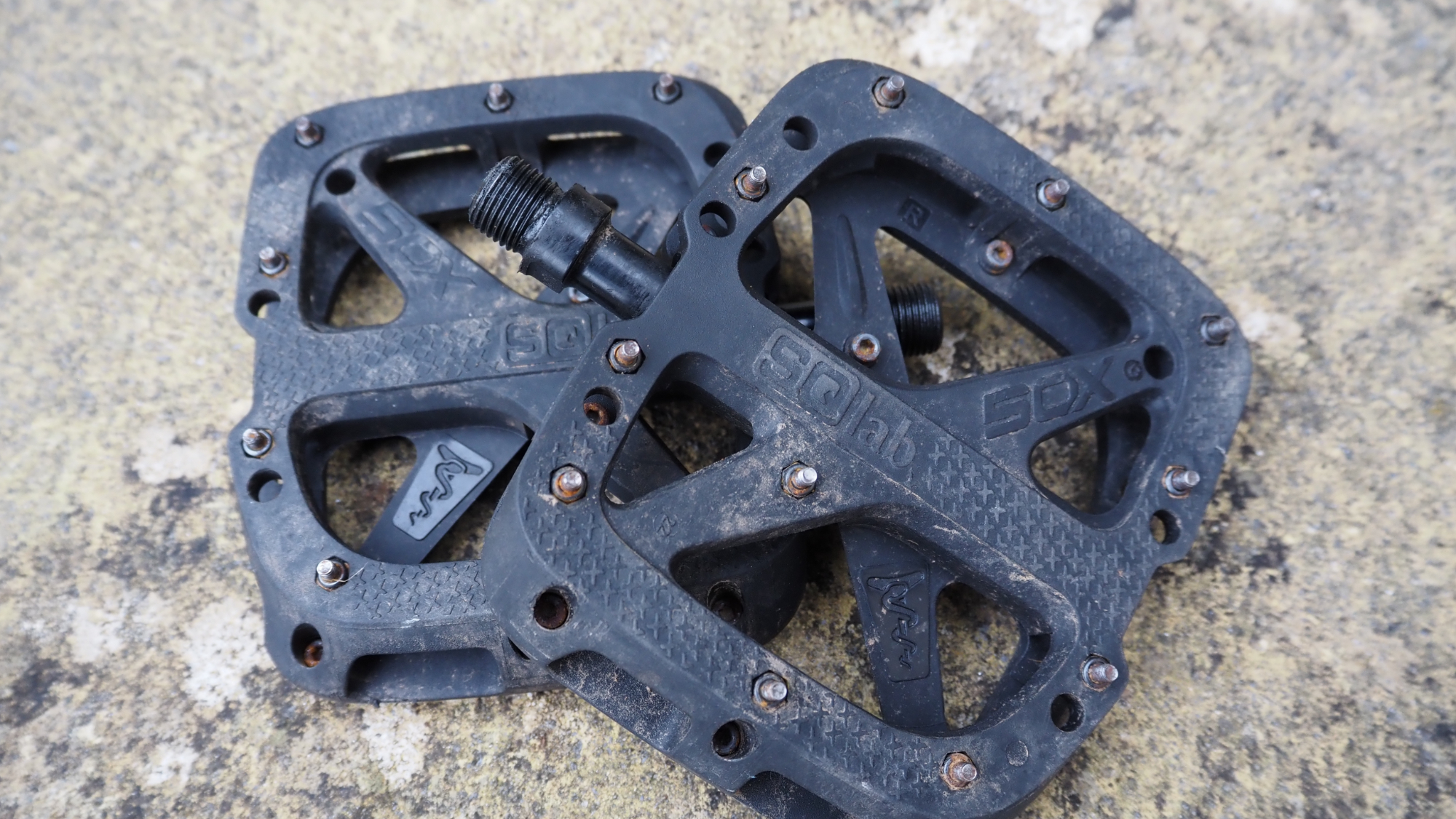
SQlab 50X
Our expert review:
Specifications
Reasons to buy
Reasons to avoid
SQlab is an innovative brand that offers slightly different takes on bike equipment that break from the norm. Its 50X pedals are a great example as they are the only flat pedals that we're aware of that offer different axle lengths. The 50X pedals come in standard, short and long options – the short has axles that are 5mm shorter than the standard, while the long version is 5mm longer.
Differing axle lengths mean the pedals sit closer or farther away from the cranks (this distance is known as the Q-factor). So if you have wider feet than most, unusually sized sit bones, or find that standard pedals don't quite fit your natural foot position for any other reason, the SQlab pedals could be exactly what you're looking for.
The 50X platforms are made from plastic (70 percent) mixed with carbon fiber (30 percent). We've been testing them for over a year and they are very hardwearing and feel nice and solid under your feet. There's no concave here, but unlike most pedals which are thicker on the inside section around the bearing, the 50Xs are at the same level as the rest of the platform.
The pins themselves are shorter than most at 3mm, but they are pretty sharp and give a decent amount of grip. One downside is that the pins will rust. That doesn't make them less effective, but it will make swapping them out for fresh pins more difficult.
8. Best MTB flat pedals for concave
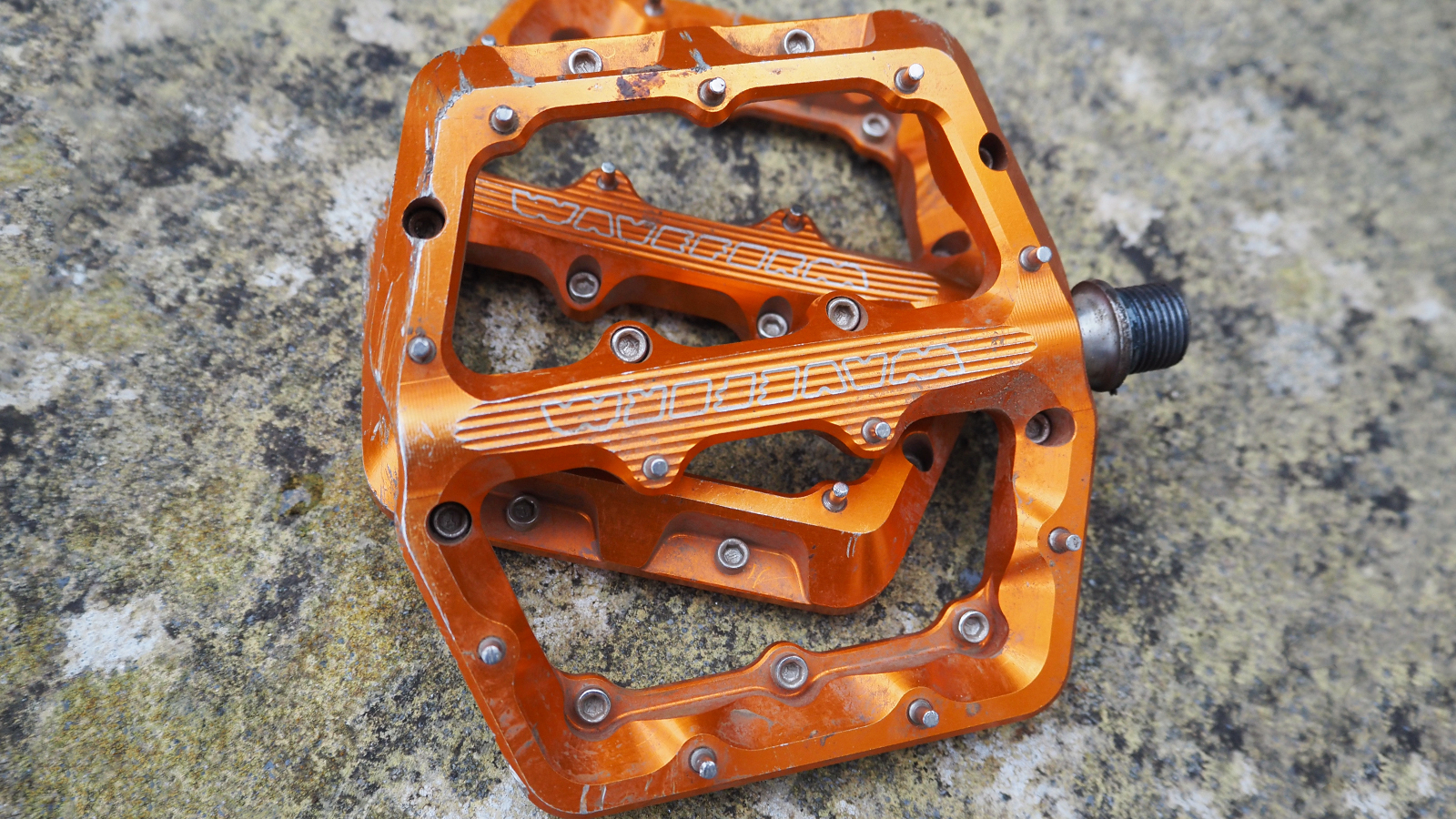
Wolf Tooth Waveform
Our expert review:
Specifications
Reasons to buy
Reasons to avoid
If you prioritize concavity in flat pedals above everything else, Wolf Tooth's Waveforms are the pedals for you. While concavity in most flat pedals runs lengthways, with a central section that's 1.5mm lower than the edges, the Waveform's concave runs from side-to-side too. That gives a noticeably dished feel to the pedals that improves foot security.
Pins are long at 5mm and have smooth rather than sharp tips, so are less likely to rip your lower legs open. Grip is excellent though and Wolf Tooth has designed the outline of the pedals to fit the shape of MTB shoes, so each pin stays in contact with shoe rubber.
Impressively, Wolf Tooth offers every part of the pedals as a separate item – from pin sets to pedal bodies. The Waveforms are easy to fix and service too, so while the price is higher than most, these pedals could literally last you a lifetime.
We've been using a pair for over a year now and they're yet to need a bearing service. A few snapped pins have been changed, which is easy to do as they bolt on from the underside using a 3mm hex key. There's a fair bit of scuffing on the outside edges from hitting rocks etc though.
9. Best online only MTB flat pedals
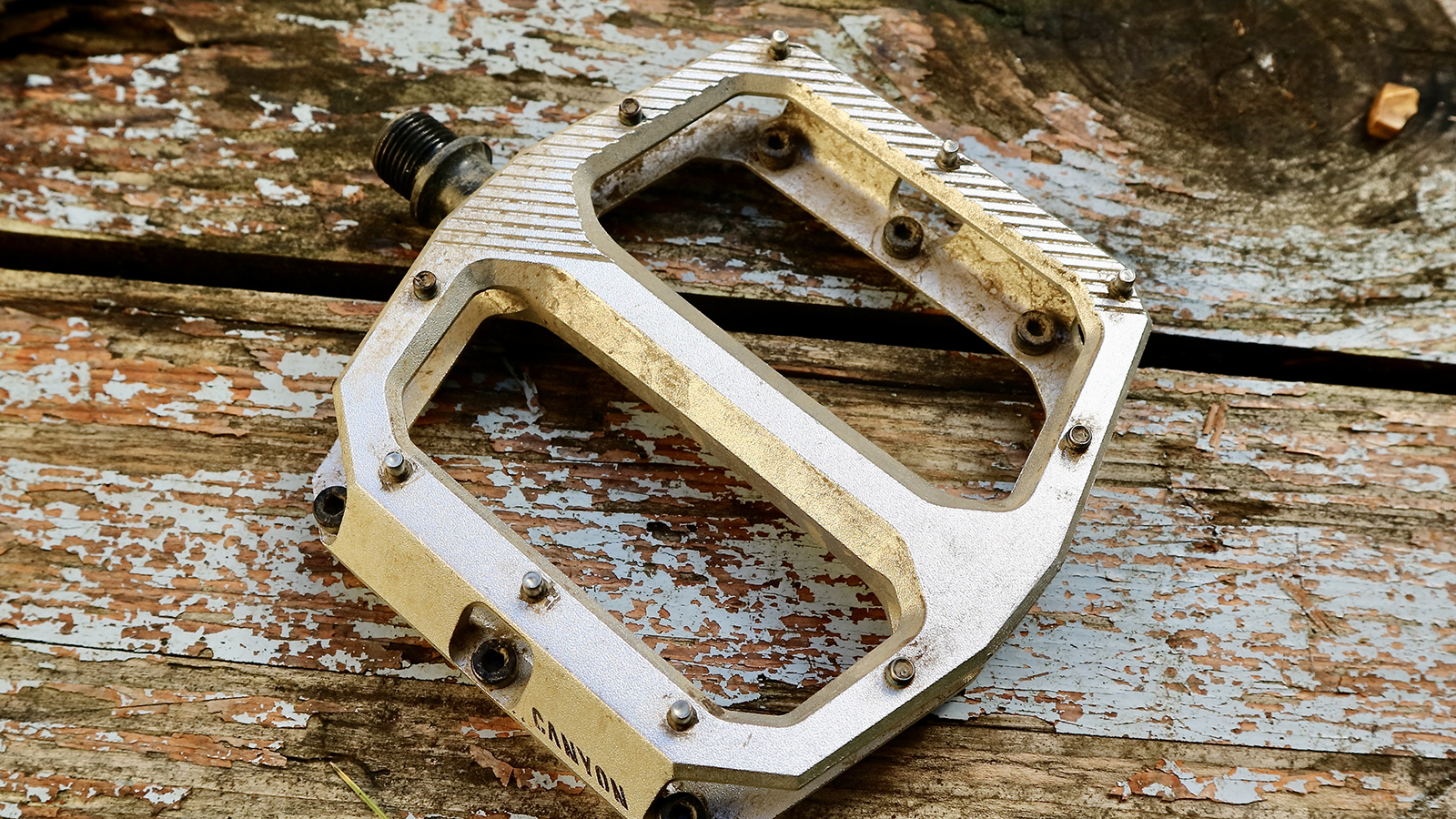
Specifications
Reasons to buy
Reasons to avoid
Canyon has thought hard about the design of the Performance Flat Pedal. It comes in two platform sizes – small for 36-42 size feet and large for 43–48. It’s 17mm thick measured at the perimeter but is 15.5mm over the axle, creating a small amount of concavity or curve to the face of the pedal, which helps center your foot on the platform. It has ten pins per side, which are a combination of thin set screws and small solid bolts and, while they don't interlock with a flat shoe sole as well as bigger pins, they offer a ton of grip.
We tested the Large sized platform pedal, which gave our tester the feeling of never missing a target when getting his foot back on after dabbing in a corner or steep descent. However, it does limit cornering clearance and a few times he snagged his pedal in rocky terrain.
There’s enough concavity to push into when setting up for a corner or technical section. The pedal does have different pin heights to keep your feet in place and there are also machined signature stripes into the surface of the platform. Canyon has nailed the pedal shape and the pin design/placement which gives excellent grip.
Our reviewer Paul Burwell concluded that the Performance Flat is, "light years away from what you usually see from a bike manufacturer – most just offer a generic pedal or none at all. Canyon has sweated the details with the Performance Flat and it has paid off."
For more, see our full Canyon MTB Performance Flat Pedal review.
How to choose the best MTB flat pedals
Do more pins equal more grip?
Pins are what give you the grip interface between a soft compound rubber mountain bike shoe and a flat pedal. The logic is that a greater number of pins gives you superior grip, and the longer they are, the more secure your shoe-to-pedal interface is.
Having more pins might be theoretically superior, but they don’t help if the distribution of pins isn't right. Pin placement is vital and this is where the pedal engineers really earn their money.
Should I go for metal or plastic flat pedals?
Most premium flat pedals are made from aluminum alloy as it's light, durable and it's much easier to change broken pins on a metal pedal body than a plastic one.
Plastic pedals have the advantage of being much cheaper though, and some brands offer versions that are exact size and shape replicas of their best aluminum pedals. However, you will have the disadvantage of problematic pin removal with the plastic incarnations.
Are bigger flat pedals better?
Bigger pedals are generally better as they give you a greater surface area on which to adjustment your feet. A larger contact area will also spread impact forces when riding drop-offs or landing jumps.
However, if your pedals are too large, they are likely to strike more rocks or stumps as you ride. While the pedals listed here are all suitable for average size feet, if your feet are particularly small, try before you buy. If there's lots of the pedal platform protruding from the side of your shoe, go for a smaller model.
What do I need to know about pedal bodies?
As a general rule, the more material you remove from a flat pedal’s structure the better its self-cleaning properties are, enabling it to shed mud during a winter ride. A pedal structure with more metal removed also yields a lighter pedal, but you still need enough pedal surface to provide a sufficient distribution of pins.
Material and manufacturing improvements have enabled pedals that are larger, lighter and capable of accommodating more pins. Having pins around the edge of the pedal makes the most sense, because the axle body area, in the middle, isn’t where you source most grip when descending. The skills philosophy of ‘heel-down’ pedal technique applies force to the fore and aft, so this is where most of the rider input happens during technical riding.
Although we refer to them as flat pedals, most are in fact slightly concave. This rise at the front and rear of most flat pedals is a subtle design feature that isn’t as obvious as pin placement, but vital. This concave shaping gives you an intuition of where the limits of the pedal are when having to readjust shoe position during a descent.
Is flat pedal thickness important?
Pedal thickness is a factor that is often ignored when choosing a pedal. But it's an important one that can affect balance and confidence on technical trails.
The thinner a pedal is, and this difference is often in single-digit millimeters, the lower your center of gravity will be. When off-the-saddle descending with level cranks, thinner pedals mean you're less likely to get bucked around on rougher trails.
How we test MTB flat pedals
We tested these MTB flat pedals over several months at least in all manner of different riding situations, so we're able to see how they handle the roughest terrains and the worst conditions. We rate the pedals according to their grip, robustness, durability and serviceability.
Meet the testers

Rich has been riding mountain bikes since the early nineties and testing bikes and kit for over a decade. His pedal of choice is definitely of the flat variety and he's ridden on most of the leading models over the years.

Guy Kesteven is BikePerfect’s tech editor. He’s written several million words about several thousand test bikes and a ridiculous amount of bike components and riding gear.
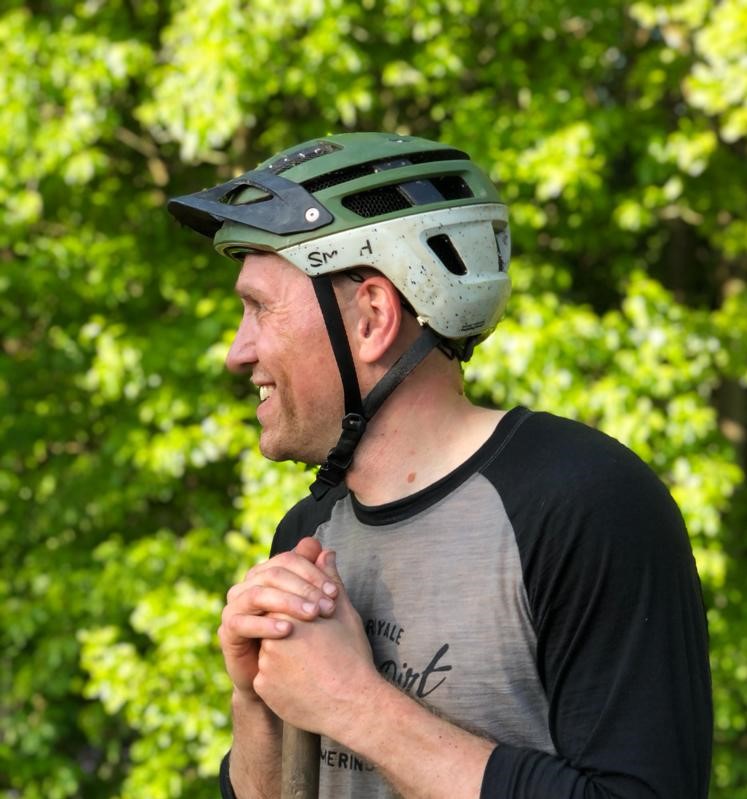
An ex-elite downhill racer, Mick's been mucking about and racing mountain bikes for over 20 years. He's tested all manner of flat and clipless pedals so knows exactly what makes for a good pedal and what doesn't.
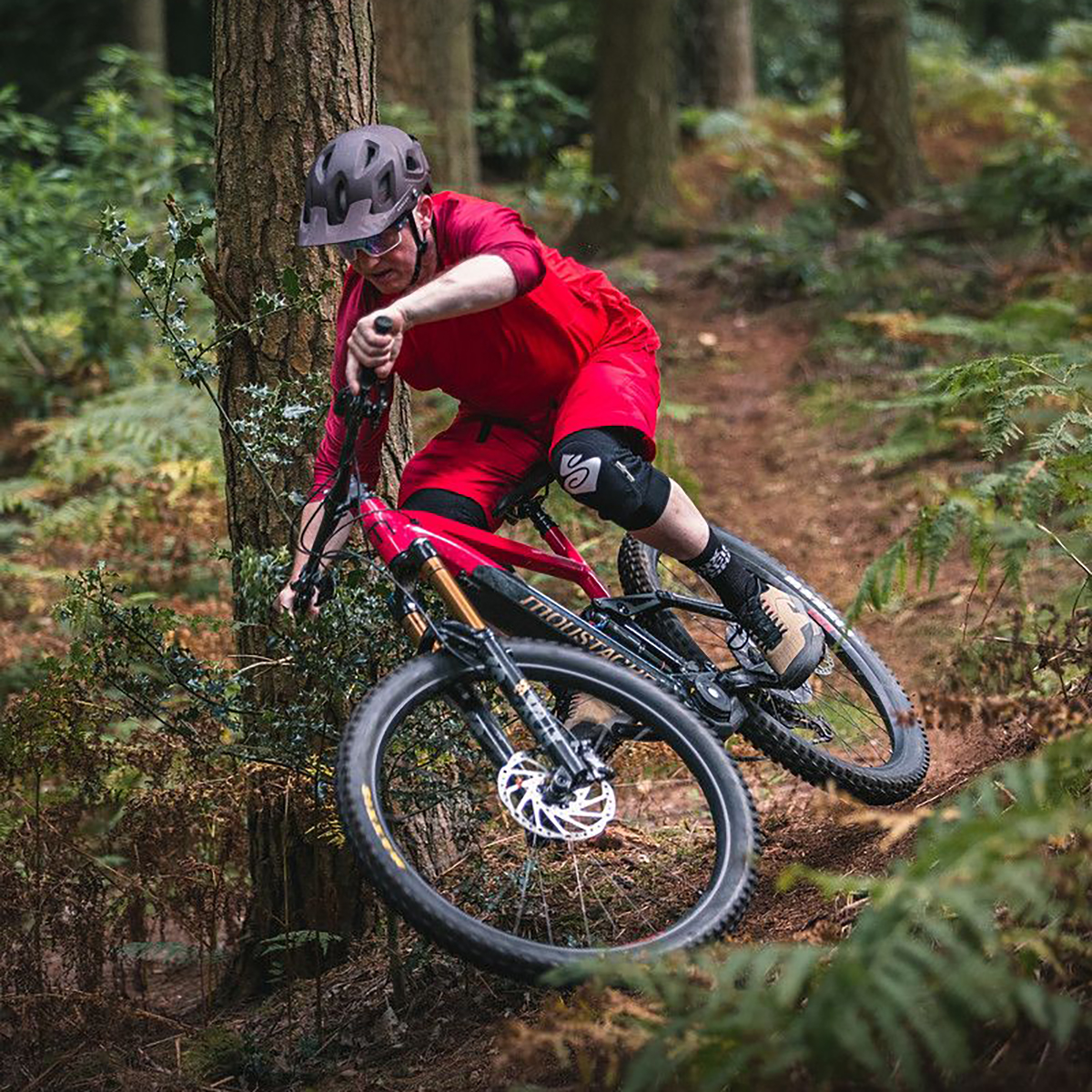
Paul has been testing mountain bikes and products for the best part of 30 years, he’s passed comment on thousands of components and bikes, from the very first 29ers and dropper posts to the latest e-MTBs and electronic drivetrains.

Rich Owen joined the BikePerfect team as editor in 2021. He's worked as a journalist and editor for over 24 years, with 12 years specializing in cycling media. Rich bought his first mountain bike (a rigid Scott Tampico) in 1995 and has been riding MTB for almost 30 years.
Current rides: Merida One-Forty 6000, Banshee Paradox, YT Jeffsy Core 3, Saracen Ariel 30 Pro
Height: 175cm
Weight: 69kg
- Guy KestevenTechnical-Editor-at-Large
- Jim BlandFreelance writer
- Paul BurwellFreelance writer
- Mick KirkmanFreelance writer
